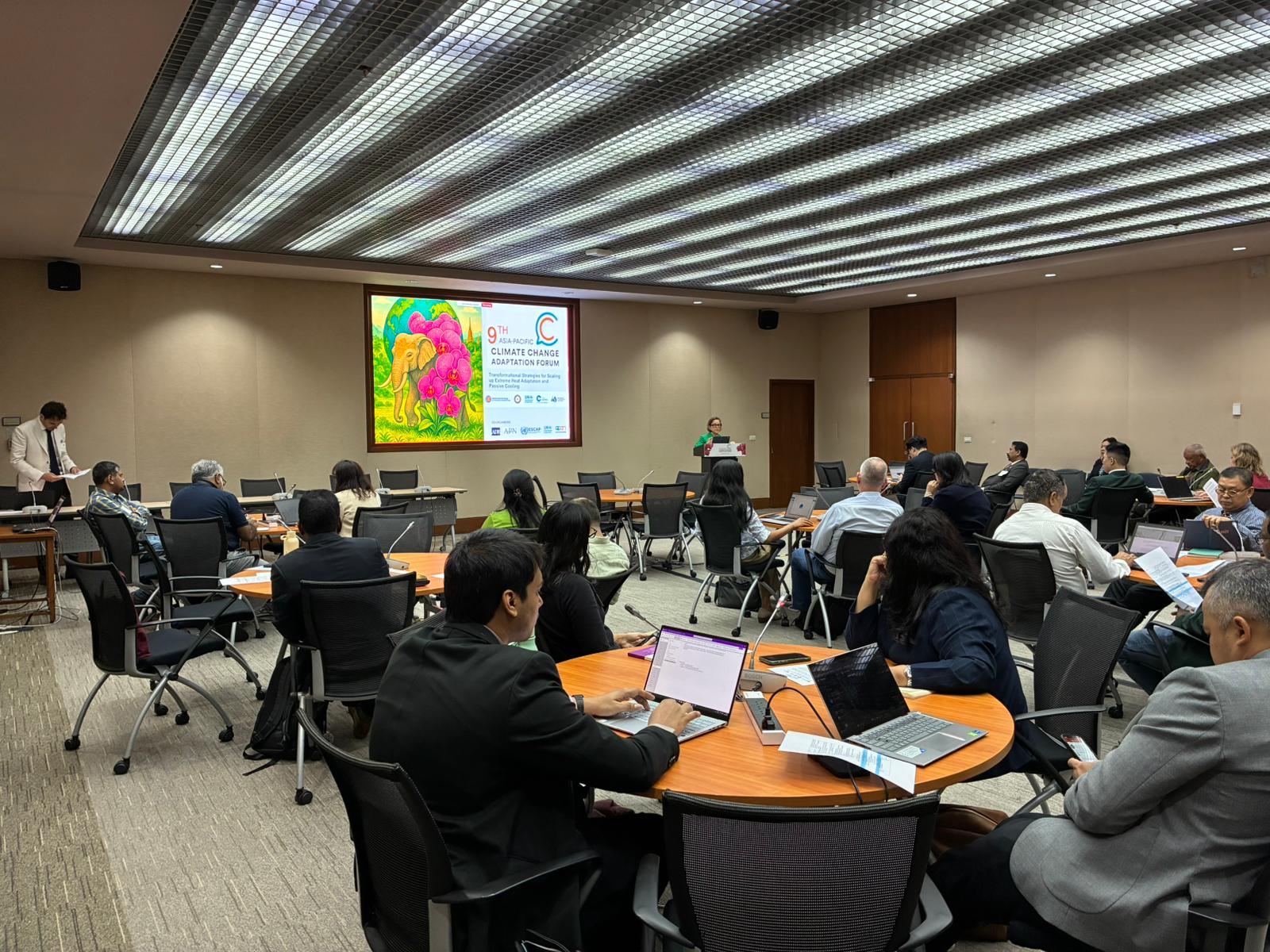9th APAN Forum: Scaling Passive Cooling and Heat Resilience in Asia–Pacific
Across Asia–Pacific, extreme heat events are becoming more frequent, longer-lasting and more intense, disrupting livelihoods, straining infrastructure, impacting health and undermining resilience of critical systems. Cities are sweltering under urban heat islands, rural communities are losing crops to heat stress, and demand for air-conditioning is surging beyond energy systems’ limits. Achieving climate-resilient cooling requires more than technology. It depends on strong governance, inclusive partnerships, and coherent roadmaps.
At the 9th Asia-Pacific Climate Change Adaptation Forum, the Cool Coalition, ASEAN Centre for Energy, India’s National Disaster Management Authority, and the Global Alliance for Buildings and Construction convened a session on “Transformational Strategies for Scaling up Extreme Heat Adaptation and Passive Cooling”. Policymakers, practitioners, and experts explored how fragmented efforts can be connected into coordinated, people-centered strategies.
Cooling as survival
Opening the discussion, Marlene Nilsson, Deputy Regional Director, UNEP Asia and the Pacific, underscored that cooling has become a matter of survival. Heat already claims nearly half a million lives annually—45% in Asia. She called for a “triple strategy” of passive cooling, energy efficiency, and refrigerant phasedown. Her message was clear: “Cooling is about protecting people, from students in classrooms to workers on construction sites and families in informal settlements.”
Xiaoyi Jin, Senior Programme Officer, Clean Cooling Collaborative added that while solutions such as reflective roofs, shading, and nature-based design exist, they will only scale if supported by enabling ecosystems of finance, skilled labour, policy, and cultural acceptance. “We build not only for comfort but for identity,” she said, calling for approaches that resonate with people’s values as well as their needs.
Session 1 – Country experiences: Building Momentum
The first session highlighted how countries are advancing heat action planning and passive cooling.
India’s journey was highlighted by S. Rakesh Kumar, Joint Secretary, NDMA, describing how the country has embedded heat action planning within its disaster management framework. From early experiments in Ahmedabad to today’s 250+ operational heat action plans, the journey has been about institutionalizing preparedness, local data, and community ownership. He explained how financing streams such as the National and State Disaster Mitigation Funds are being tapped for heat resilience, emphasizing that “Plans only work when they are locally grounded, community-owned, and backed by sustainable finance.”
Regional linkages were outlined by Benjamin Hickman, Programme Manager, UNEP India, who showed how global frameworks like the Global Cooling Pledge and the forthcoming “Beat the Heat” initiative are providing momentum. He stressed integrating passive cooling into affordable housing, and urban design, linking adaptation with development priorities. He also highlighted the national and sub-national engagements under the Swiss Agency for Development and Cooperation supported BeCool programme.
The panel discussion brought together diverse national perspectives on tackling extreme heat and scaling passive cooling.
- Dr. Sunimal Jayathunga, Additional Secretary, Environment Development, Ministry of Environment, Battaramulla, Sri Lanka outlined the country’s early steps to address heat stress, noting that policies are fragmented across sectors. He stressed the need for integrated approaches across health, forestry, and energy, and called for stronger regional and global collaboration to accelerate action.
- Albert Pagcu Dela Cruz Sr., Commissioner, Climate Change Commission, Philippines spoke on urban vulnerability, emphasizing how migration, consumer behavior, and urban overcrowding exacerbate the heat crisis. He highlighted the importance of local climate action plans, digital measurement tools, and the importance of nature-based cooling.
- Brahm Parkash Yadav, Senior Consultant, NDMA pointed out critical barriers to scaling heat adaptation: lack of granular data, varying socio-economic vulnerabilities, and the need for localized, vernacular solutions. He stressed the importance of international collaboration and learning from regional best practices.
- Nadine Antenen, Regional Programme Officer on DRR, Climate Change, and Environment, Swiss Agency for Development and Cooperation reflected on the parallels between heatwaves and disasters, emphasizing the need for early warning, preparedness, and data-driven planning. She underscored that tackling heat is both an urgent adaptation priority and a mitigation opportunity and encouraged deeper international knowledge exchange.
Together, the panel underscored that while contexts differ, the solutions converge on the need for integrated governance, people-centred planning, and deeper regional knowledge exchange.
Session 2 – From Strategy to Action
The second session focused on how to translate strategies into scalable action through partnerships, policies, and institutional capacity.
- ASEAN’s Passive Cooling Strategies Roadmap, presented by Rio Jon Piter Silitonga, Senior Officer, Energy Efficiency and Conservation (EE&C) Department, ASEAN Centre for Energy, is aligning member states on policy harmonization, capacity building, and technology adoption. Despite uneven policy landscapes, ASEAN offers a platform for regional cooperation and mainstreaming.
- India’s urban development lens, shared by Raman Kumar Singh, Senior Urban Development Specialist, NIUA highlighted how cities can operationalize cooling through a three-tier approach of policy, planning, and projects, with frameworks and training to empower municipal officials. Integrating cooling initiatives with the spatial planning processes will enable long-term sustainability.
- Shravan Prabhu, Programme Associate, Council on Energy, Environment and Water (CEEW), highlighted the heat action plan framework, the local implementation gap, drawing attention to the thousands of urban local bodies in India, most of which lack functioning heat action plans. While more than 200+ cities in India have HAPs, scaling the HAPs to all cities of India and closing these gaps in staffing, finance, and execution capacity is essential for scaling.
Bringing it together: A call for governance, equity, and imagination
Across the discussions, one message was clear: tackling extreme heat and scaling passive cooling cannot be reduced to engineering fixes. It is about governance that cuts across silos, equity that ensures vulnerable communities are protected, and embeds cooling in cultural and social contexts. By connecting global pledges and frameworks to local plans, and centering people in every intervention, Asia–Pacific can transform the heat crisis into a driver of sustainable, inclusive development.

